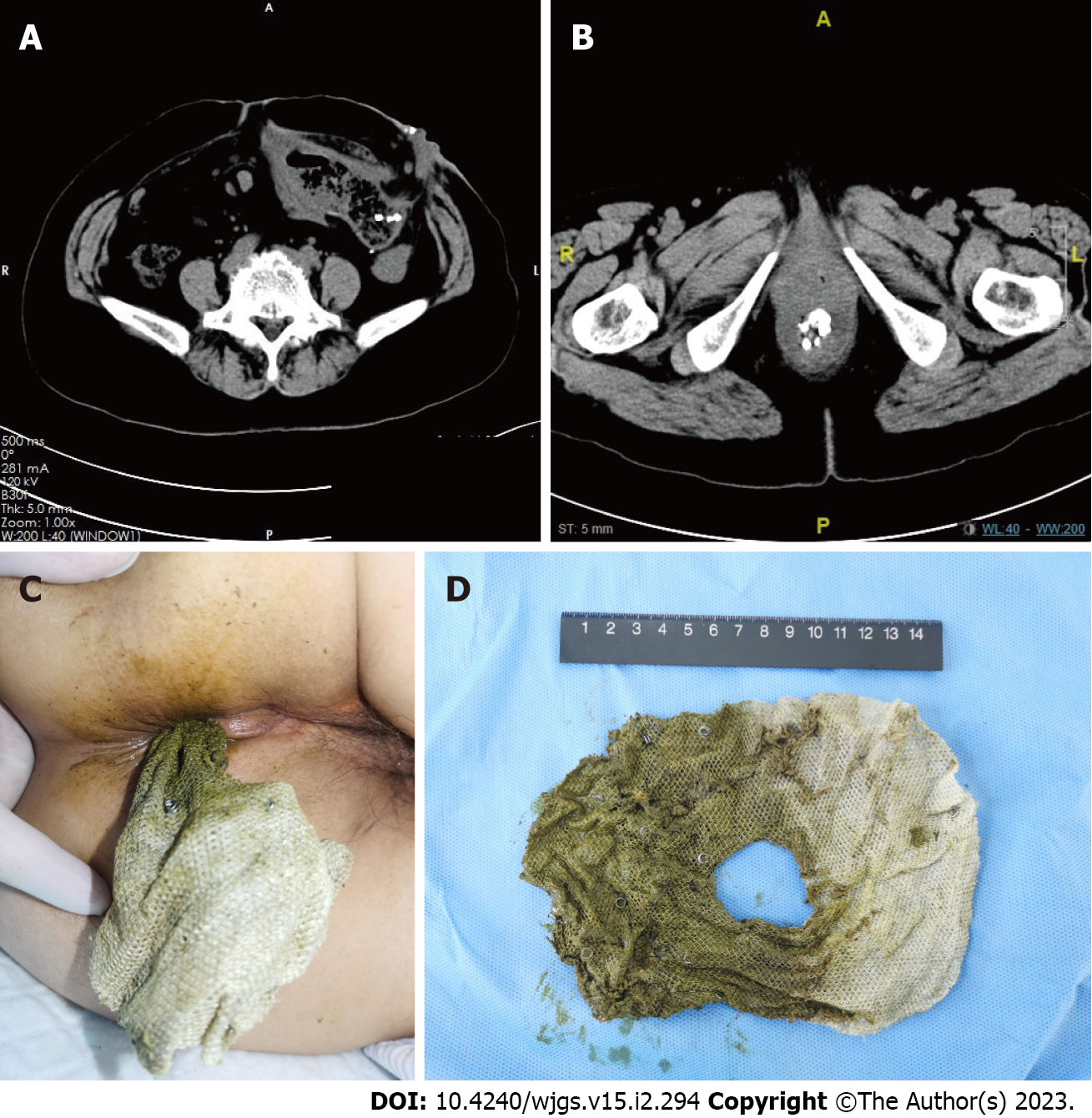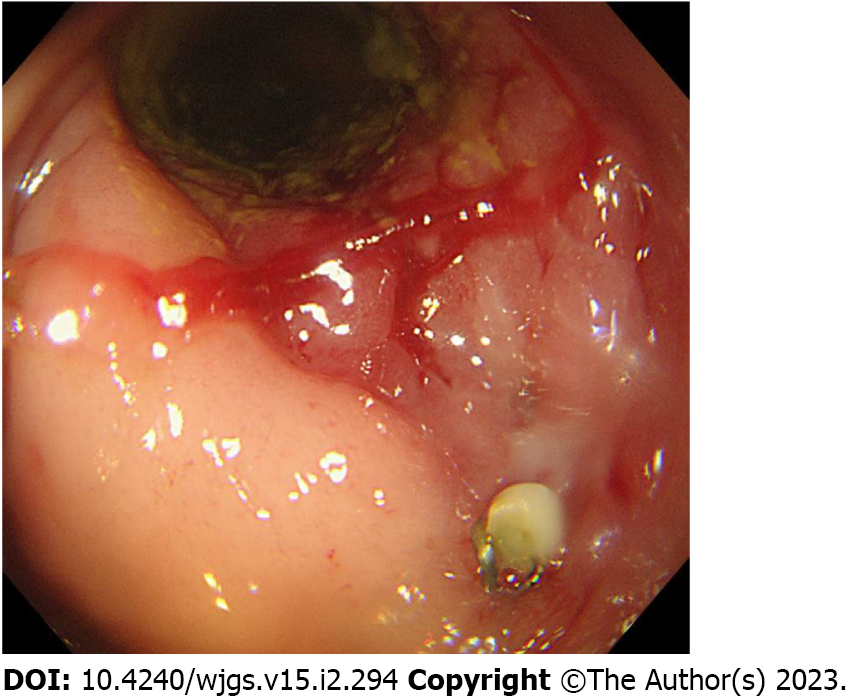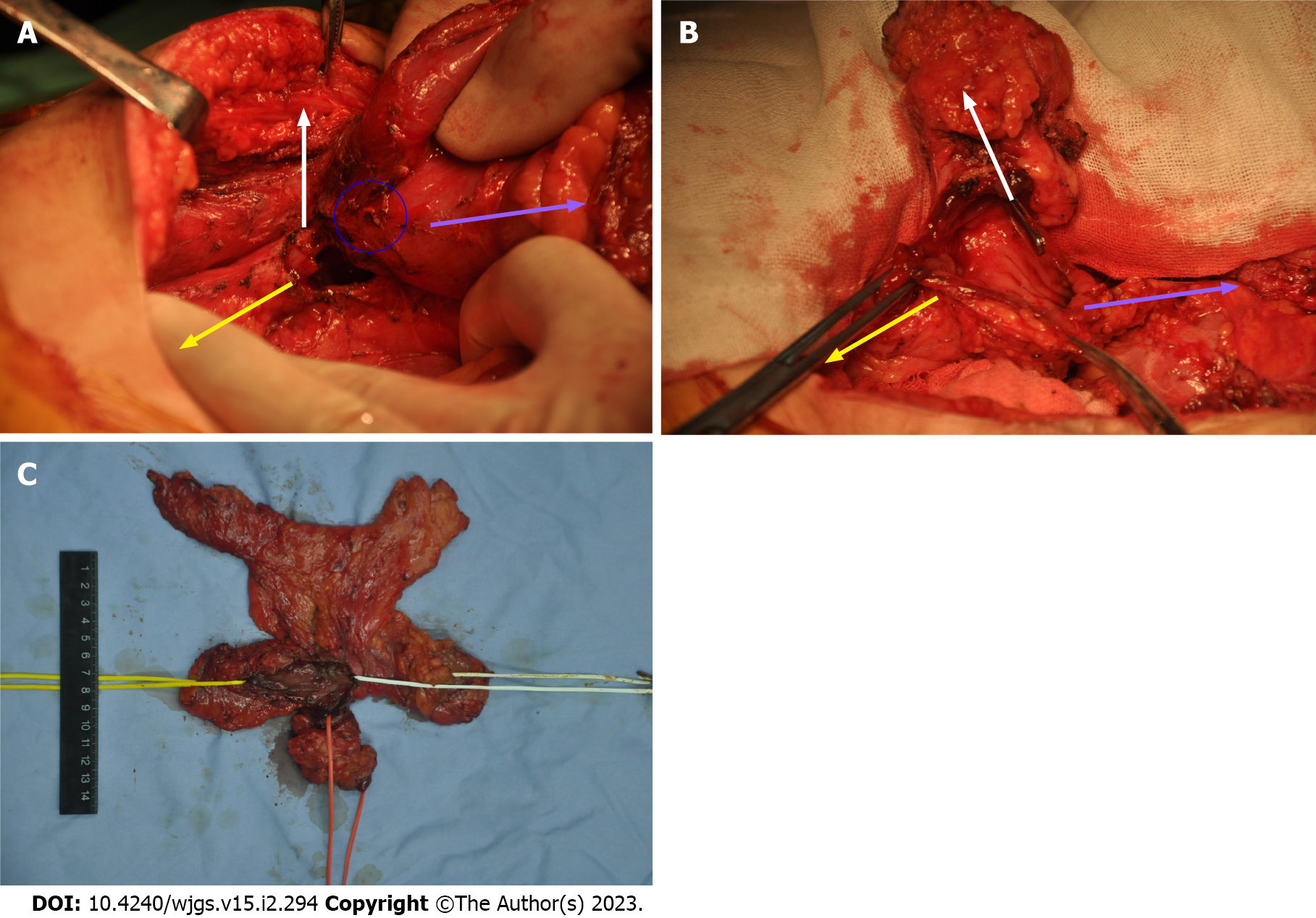Copyright
©The Author(s) 2023.
World J Gastrointest Surg. Feb 27, 2023; 15(2): 294-302
Published online Feb 27, 2023. doi: 10.4240/wjgs.v15.i2.294
Published online Feb 27, 2023. doi: 10.4240/wjgs.v15.i2.294
Figure 1 The computed tomography images and the mesh.
A: The computed tomography (CT) images were taken in January 2021; B: The CT images were taken before hospitalization in April 2021. In A and B metal tackers were seen entering the intestine with the mesh located near the anus; C: After hospitalization, the mesh was partially excreted through the anus; D: The mesh was excreted intact along with its metal tackers.
Figure 2 The contrast agent was injected through the drainage tube placed through the stoma.
The intestinal tube formed a t-branch tube structure.
Figure 3 Transanal colonoscopy revealed the stenosis.
Metal tackers that have not yet been excreted can be seen.
Figure 4 The structure of the t-branch tube.
A: The yellow arrow indicates the proximal colon, the white arrow indicates the colostomy colon, the purple arrow indicates the distal colon, and the blue circle indicates the small intestinal wall. Intraoperative exploration confirmed that the t-branch tube was composed of the distal colon, proximal colon, colostomy colon, and small intestinal wall; B: After separating the small intestinal wall, the structure of the t-branch tube could be more clearly identified; C: Surgical removal of the t-branch tube structure of the colon. The yellow marker shows the proximal colon, the green marker indicates the distal colon, the orange marker shows the original stoma, and the defect is the original small intestinal wall.
- Citation: Zhang Y, Lin H, Liu JM, Wang X, Cui YF, Lu ZY. Mesh erosion into the colon following repair of parastomal hernia: A case report. World J Gastrointest Surg 2023; 15(2): 294-302
- URL: https://www.wjgnet.com/1948-9366/full/v15/i2/294.htm
- DOI: https://dx.doi.org/10.4240/wjgs.v15.i2.294












